Abstract
There has been a significant controversy over the past decade regarding the relative information content of bioelectric and biomagnetic signals. In this paper we present a new, theoretical example of an electrically-silent magnetic field, based on a bidomain model of a cylindrical strand of tissue generalized to include off-diagonal components in the conductivity tensors. The physical interpretation of the off-diagonal components is explained, and analytic expressions for the electrical potential and the magnetic field are found. These expressions show that information not obtainable from electrical potential measurements can be obtained from measurements of the magnetic field in systems with conductivity tensors more complicated than those previously examined.
Full text
PDF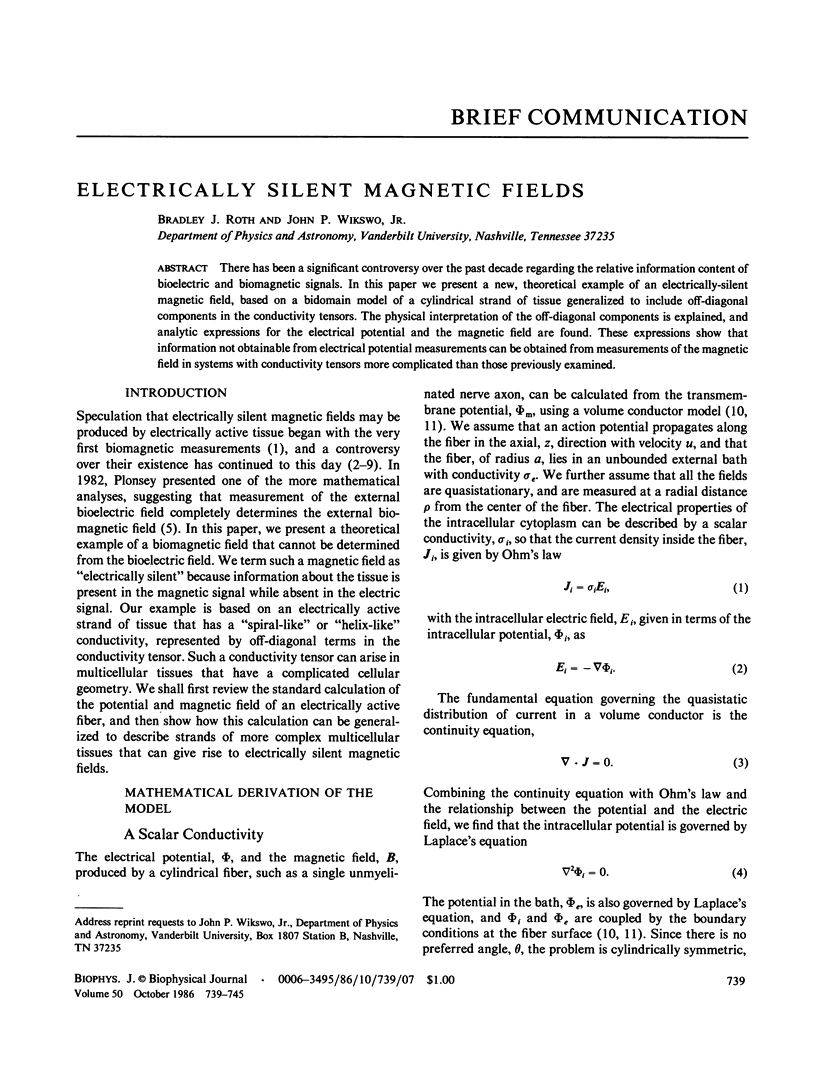

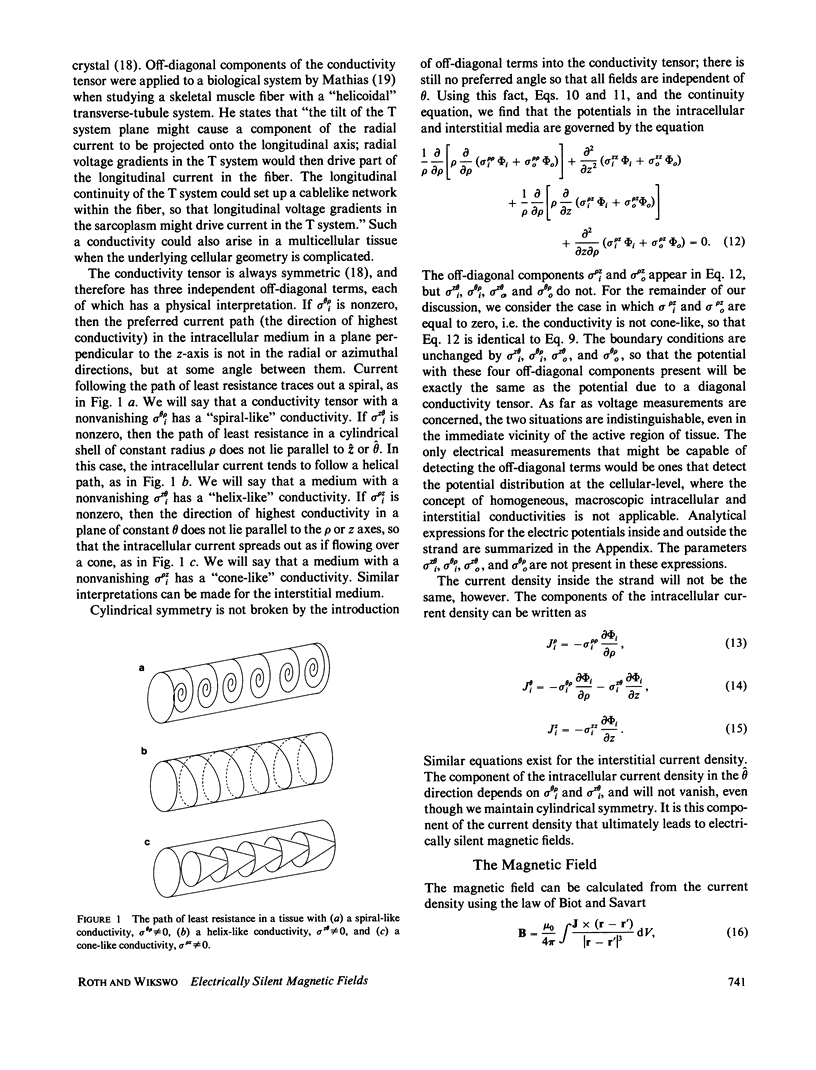
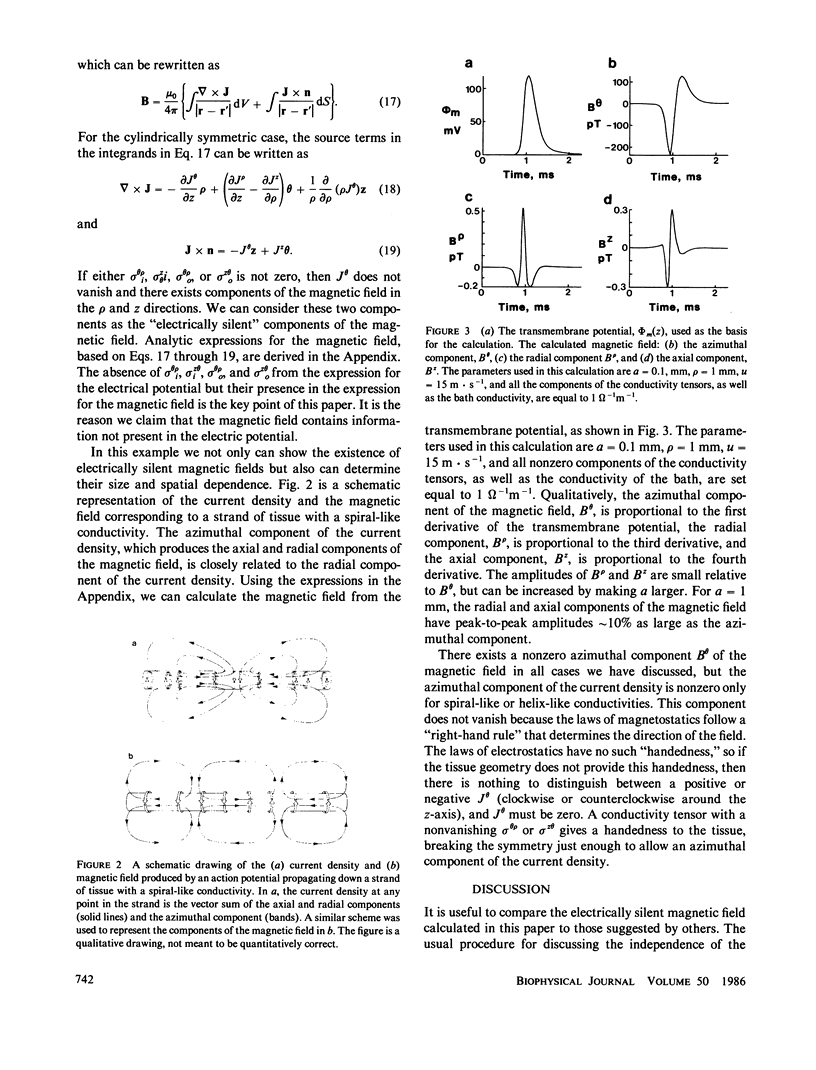
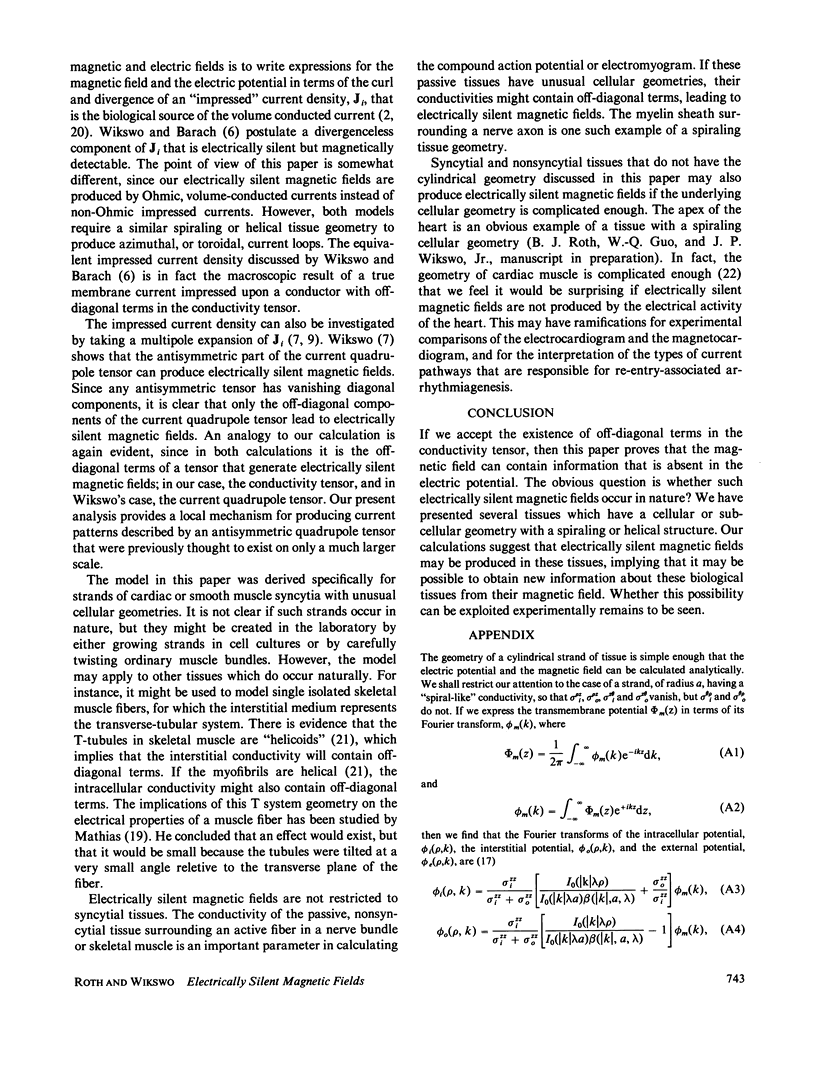
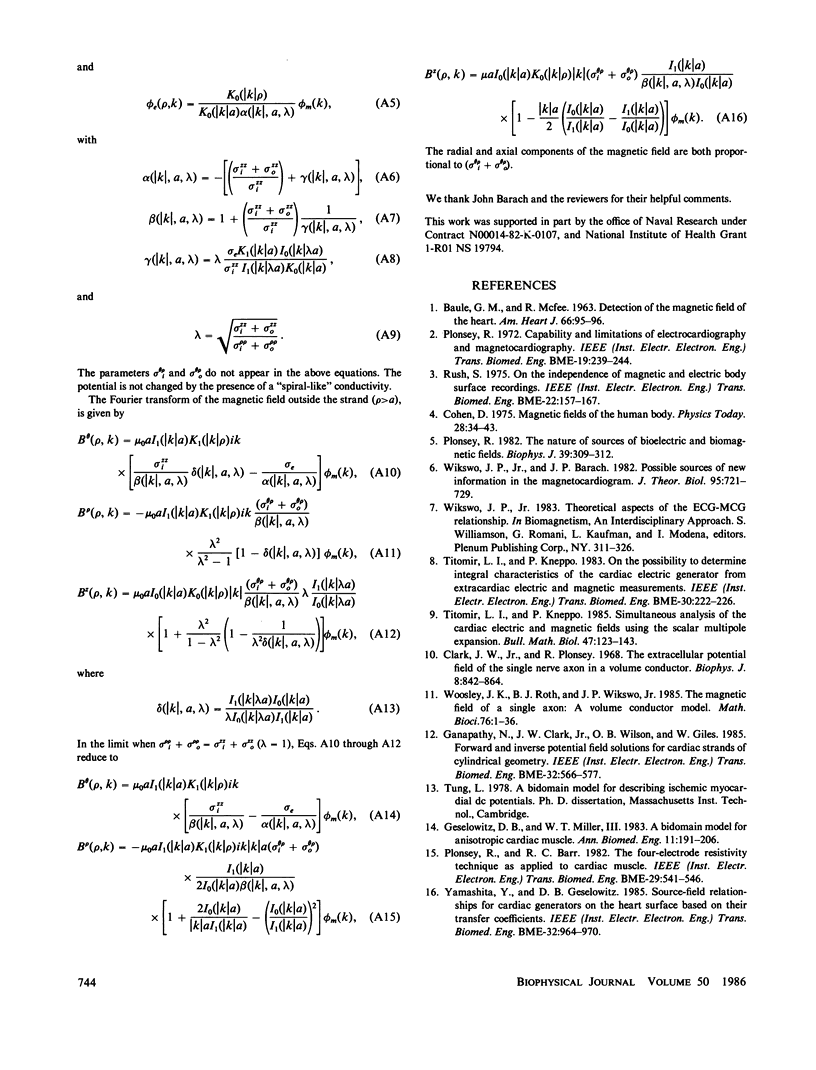
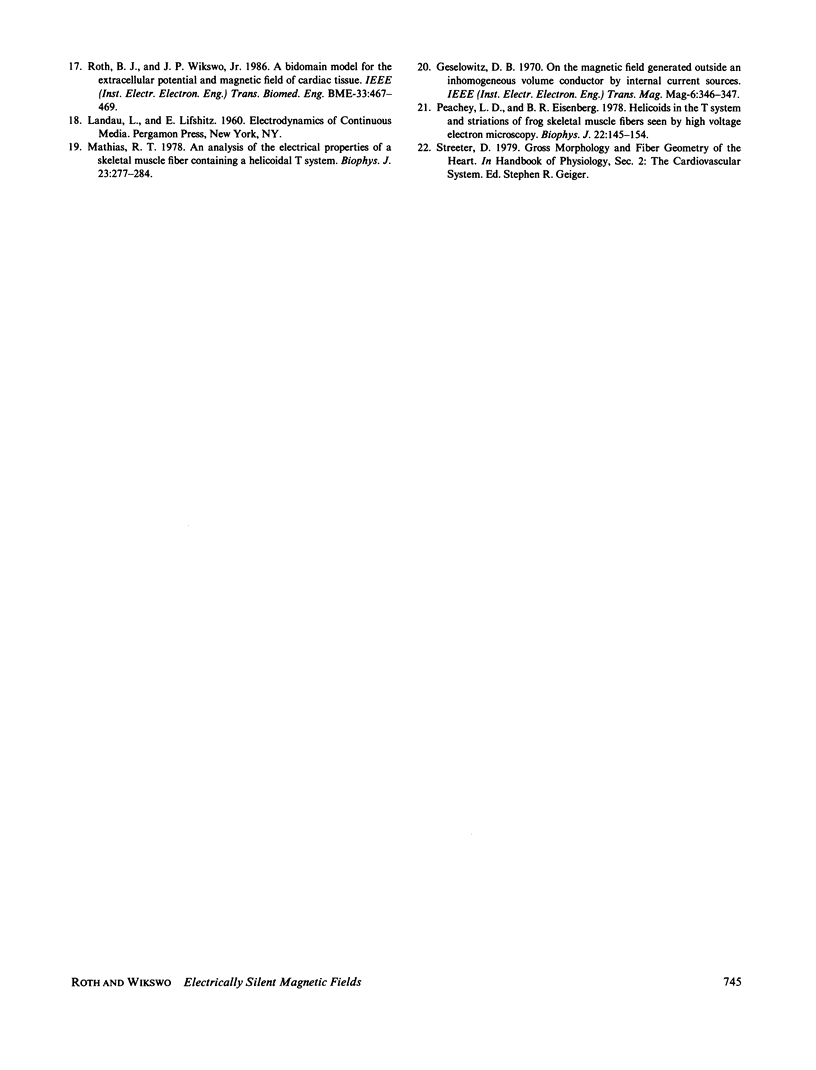
Selected References
These references are in PubMed. This may not be the complete list of references from this article.
- BAULE G., MCFEE R. DETECTION OF THE MAGNETIC FIELD OF THE HEART. Am Heart J. 1963 Jul;66:95–96. doi: 10.1016/0002-8703(63)90075-9. [DOI] [PubMed] [Google Scholar]
- Clark J., Plonsey R. The extracellular potential field of the single active nerve fiber in a volume conductor. Biophys J. 1968 Jul;8(7):842–864. doi: 10.1016/S0006-3495(68)86524-5. [DOI] [PMC free article] [PubMed] [Google Scholar]
- Ganapathy N., Clark J. W., Jr, Wilson O. B., Giles W. Forward and inverse potential field solutions for cardiac strands of cylindrical geometry. IEEE Trans Biomed Eng. 1985 Aug;32(8):566–577. doi: 10.1109/TBME.1985.325481. [DOI] [PubMed] [Google Scholar]
- Geselowitz D. B., Miller W. T., 3rd A bidomain model for anisotropic cardiac muscle. Ann Biomed Eng. 1983;11(3-4):191–206. doi: 10.1007/BF02363286. [DOI] [PubMed] [Google Scholar]
- Mathias R. T. An analysis of the electrical properties of a skeletal muscle fiber containing a helicoidal T system. Biophys J. 1978 Aug;23(2):277–284. doi: 10.1016/S0006-3495(78)85448-4. [DOI] [PMC free article] [PubMed] [Google Scholar]
- Peachey L. D., Eisenberg B. R. Helicoids in the T system and striations of frog skeletal muscle fibers seen by high voltage electron microscopy. Biophys J. 1978 May;22(2):145–154. doi: 10.1016/S0006-3495(78)85480-0. [DOI] [PMC free article] [PubMed] [Google Scholar]
- Plonsey R., Barr R. The four-electrode resistivity technique as applied to cardiac muscle. IEEE Trans Biomed Eng. 1982 Jul;29(7):541–546. doi: 10.1109/tbme.1982.324927. [DOI] [PubMed] [Google Scholar]
- Plonsey R. Capability and limitations of electrocardiography and magnetocardiography. IEEE Trans Biomed Eng. 1972 May;19(3):239–244. doi: 10.1109/TBME.1972.324123. [DOI] [PubMed] [Google Scholar]
- Plonsey R. The nature of sources of bioelectric and biomagnetic fields. Biophys J. 1982 Sep;39(3):309–312. doi: 10.1016/S0006-3495(82)84521-9. [DOI] [PMC free article] [PubMed] [Google Scholar]
- Roth B. J., Wikswo J. P., Jr A bidomain model for the extracellular potential and magnetic field of cardiac tissue. IEEE Trans Biomed Eng. 1986 Apr;33(4):467–469. doi: 10.1109/TBME.1986.325804. [DOI] [PubMed] [Google Scholar]
- Rush S. On the independence of magnetic and electric body surface recordings. IEEE Trans Biomed Eng. 1975 May;22(3):157–167. doi: 10.1109/tbme.1975.324555. [DOI] [PubMed] [Google Scholar]
- Titomir L. I., Kneppo P. On the possibility to determine integral characteristics of the cardiac electric generator from extracardiac electric and magnetic measurements. IEEE Trans Biomed Eng. 1983 Apr;30(4):222–226. doi: 10.1109/tbme.1983.325221. [DOI] [PubMed] [Google Scholar]
- Titomir L. I., Kneppo P. Simultaneous analysis of the cardiac electric and magnetic fields using the scalar multipole expansion. Bull Math Biol. 1985;47(1):123–143. doi: 10.1007/BF02459649. [DOI] [PubMed] [Google Scholar]
- Wikswo J. P., Jr, Barach J. P. Possible sources of new information in the magnetocardiogram. J Theor Biol. 1982 Apr 21;95(4):721–729. doi: 10.1016/0022-5193(82)90350-2. [DOI] [PubMed] [Google Scholar]
- Yamashita Y., Geselowitz D. B. Source-field relationships for cardiac generators on the heart surface based on their transfer coefficients. IEEE Trans Biomed Eng. 1985 Nov;32(11):964–970. doi: 10.1109/TBME.1985.325647. [DOI] [PubMed] [Google Scholar]


